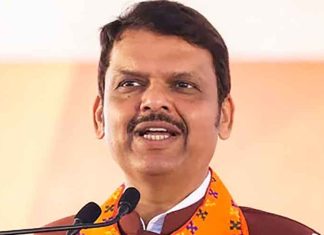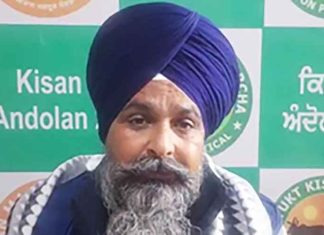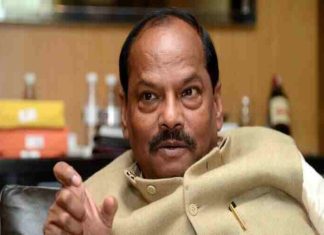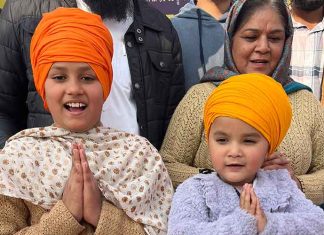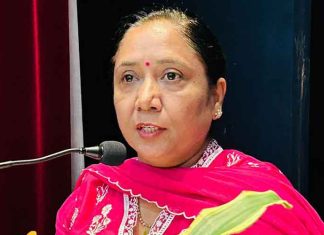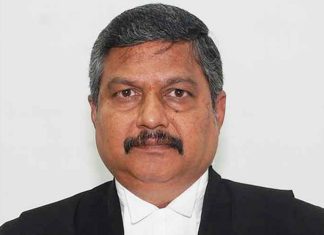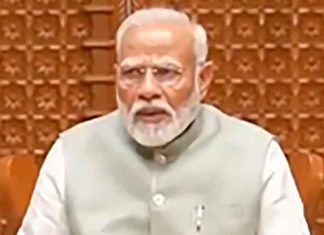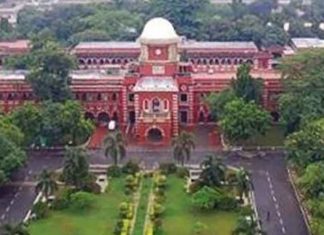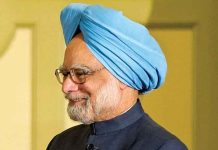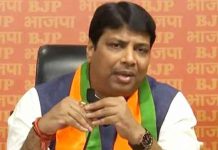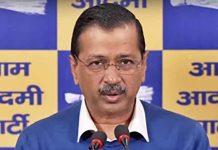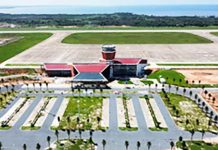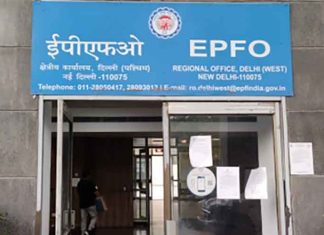New Delhi, Dec 3, 2024
External Affairs Minister (EAM) S. Jaishankar said on Tuesday that India-China ties that had been “abnormal since 2020” are moving in the direction of “some improvement” following several high-level engagements, including the meeting between Prime Minister Narendra Modi and Chinese President Xi Jinping held on the sidelines of the BRICS Summit on October 23.
Making a statement in the Lok Sabha regarding ‘recent developments in India’s relations with China’, the EAM provided an extensive update on recent developments in India-China relations, particularly the border areas, highlighting the diplomatic and military measures taken to restore peace and tranquillity along the Line of Actual Control (LAC).
“Our ties have been abnormal since 2020, when peace and tranquillity in the border areas were disturbed. Recent developments reflecting our continuous diplomatic engagement have set our ties in the direction of some improvement,” he said.
He reiterated that normalcy in India-China relations depends on mutual sensitivity, respect, and interests.
“India-China relations cannot be normal in the absence of peace and tranquillity in the border areas. Restoration of peace and tranquillity would be the basis for the rest of the relationship to move forward,” he said while stressing that sustained efforts at both diplomatic and military levels remain pivotal in managing the challenges along the LAC and fostering a stable bilateral relationship.
The EAM spotlighted that the bilateral relationship had progressed in many domains, but was negatively affected by the recent events.
“We are clear that the maintenance of peace and tranquillity in border areas is a prerequisite for the development of our ties. In the coming days, we will be discussing both de-escalation as well as effective management of our activities in the border areas.
The conclusion of the disengagement phase now allows us to consider other aspects of our bilateral engagement in a calibrated manner, keeping our national security interests first and foremost. In my recent meeting with Foreign Minister Wang Yi, we reached an understanding that the special representatives and the Foreign Secretary level mechanisms will be convening soon,” he stated.
The meeting between PM Modi and Xi Jinping on the sidelines of the 16th BRICS Summit was the first between the two countries at delegation level in nearly five years and came close on the heels of the disengagement and patrolling agreement and the resolution of issues that had arisen in the India-China border areas in 2020.
Referring to the violent clashes in the Galwan Valley in June 2020, Jaishankar recalled the gravity of the situation, which saw fatalities for the first time in 45 years.
“The circumstances led to heavy weaponry being deployed in close proximity to the LAC, necessitating determined counter-deployment of adequate capability,” he stated.
He mentioned that the October 21 agreement is the latest in the series of an understanding in regard to the resolution of the situation at various friction points in eastern Ladakh in the aftermath of the events in May-June 2020 and the initial disengagement in Galwan Valley in July 2020.
The EAM elaborated on China’s illegal occupation of 38,000 square kilometres of Indian territory in Siachen since the 1962 conflict and noted Pakistan’s illegal ceding of 5,180 square kilometres of Indian territory to China in 1963, which has been under its occupation since 1948.
“India and China have held talks for multiple decades to resolve the boundary issue,” he said.
He described the large-scale troop deployment by China along the LAC in Eastern Ladakh during April-May 2020, which resulted in multiple face-offs and disrupted patrolling activities.
“It is to the credit of our armed forces that, despite logistical challenges and the then-prevailing COVID situation, they were able to counter-deploy rapidly and effectively,” he said.
In his statement, he also traced the history of India-China diplomatic engagements dating back to 1988 when a clear understanding was reached to settle the boundary issue through peaceful consultations. Agreements in 1993 and 1996 established mechanisms to maintain peace along the LAC. He noted further advancements, including the 2005 protocol on confidence-building measures and the establishment of the Working Mechanism for Consultation and Coordination (WMCC) in 2012.
“The purpose of recalling these agreements is to underline the elaborate nature of our shared efforts to ensure peace and tranquillity and to emphasise the seriousness of the 2020 disruptions for our overall relationship,” he said.
Jaishankar reaffirmed India’s three key principles: strict respect for and observance of the LAC, no unilateral alteration of the status quo, and adherence to past agreements. He emphasised that the restoration of peace and tranquillity remains the foundation for normalising India-China ties.
“The combination of a firm and principled stance on the situation in the border areas, as well as a clearly articulated approach to the totality of our ties, have been the foundation of our engagement with China for the last four years,” he added.
Updating the House on the latest developments, Jaishankar referred to the October 21 agreement on disengagement in the Depsang and Demchok areas, which was achieved after intensive negotiations. He highlighted that patrolling in traditional areas has resumed following verification of disengagement on the ground.
“The problem in these two areas pertained primarily to obstructions of our long-standing patrolling activity and access by nomadic populations to traditional grazing grounds,” he said.
Jaishankar detailed several high-level engagements, including his own meetings with Chinese Foreign Minister Wang Yi in Astana and Vientiane earlier this year and again at the G20 Summit in Rio de Janeiro on November 18. National Security Advisors and Defense Ministers from both sides have also been in active dialogue.
“In pursuance of these discussions, the Defence Minister met his Chinese counterpart at the ASEAN Defence Ministers’ meeting on November 20 to discuss progress on the disengagement agreement, the need for de-escalation, and the strengthening of confidence-building measures,” Jaishankar said.(Agency)










